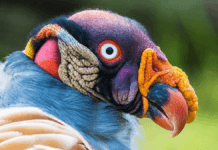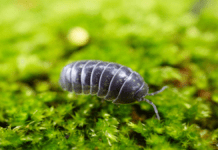When the first rainfall happens in Australia’s wet season, it showcases the beginning of an incredible natural event on Christmas Island in Australia. It is none other than the process called ‘red crab migration ’. Every year in the same season lots of red crabs travel through the island to mate and spawn. According to Parks Australia, the number of migrating red crabs is more than 50 million each year. This is absolutely an amazing event that happens in nature and has great value. In this article, I bring you all the things about red crab migrations that will amaze you. Without further introductions let’s take a look at those facts!
What are the characteristics of these red crabs?
The common color of the red crabs in Christmas Island is bright red. But some crabs have orange and purple color shells. These red crabs are usually big compared with other crab species. They are a slowly growing crab species and it takes about 4-5 years to become sexually mature. Then they begin to participate in world-famous breeding migration!
Where do they live?
Except for the migration period, red crabs settle in one place throughout the year. Their most common habitats are rainforests as they prefer moisture. They dig burrows on deep soils in rainforests. Their burrows have single chambers and single entrance tunnels. It means they live alone. Besides the breeding period, red crabs are very territorial animals and do not like to have intruders in their burrows.
When does the red crab migration happen?

Red crab migration usually takes place from October to November at the beginning of the rainy season each year. As this migration is a long journey, it is very hard to retain moisture in their bodies. But with rain, the environment fills with moisture and, red crabs can travel without being dehydrated and it saves their lives. And also according to scientists red crabs breeding sequence is connected with the phases of the moon. During the last quarter of the moon, there is a high tide in the sea. So female red crabs can easily release their eggs to the sea.
This migration starts from the plateau and usually lasts up to 18 days. A Huge number of red crabs gather together and move as streams towards the coast. Anything or anyone in their way does not matter to them and move around or over any obstacle they find their usual routine which used year after year. And also they use the same routines to migrate and return. The highest movement of red crabs can be seen in the early mornings and the late afternoons. As is very cool and has a better shade in that time, red crabs can easily move without dehydration.

This Christmas Island is the only place in the world where you can see ‘Crab Bridges’. Those bridges are established over the busiest roads on the island and they provide a safe passage to red crabs to continue their immigration.
How do they give birth to babies?
Their breeding process is very complex and very attractive. When do the migration, male crabs lead it and large male red crabs usually arrive on the coast within 5-7 days. Female crabs also follow them and reach the coast soon. The first thing they do is dip in the sea. They do it to reproduce moisture in their bodies. Then male red crabs move to lower terraces in the shore and dig deep burrows. When it is done, females move to those burrows and have their mating process privately!
After mating, male red crabs dip in the sea again and commence to go back to their usual habitats. Not like in migration, in returning they move faster and reach their habitats in only about 1-2 days. But female crabs cannot return easily as their males do. They have to stay there for about two weeks. It takes 3 days to produce eggs after their mating process. When males leave them and return, these females remain in their burrows for about 12-13 days until their eggs are well developed. A female crab usually carries around 100,000 eggs!

After 12-13 days, when high tide turns, female crabs release their eggs to sea. Usually, they do this on nights and this happens for 5-6 consecutive nights. After laying eggs female crabs also return to their habitats crossing plateau roads in Christmas Island.
As soon as contact the water, crab larvae hatch from eggs. Within the next month, they pass several stages of their life and become a stage called megalopae. Within two more days, they become well-formed baby crabs and then they begin to go to the inland. But actually very few of those little babies make their way to the plateau and usually, they take 9 days to arrive. Then they live hiding under rocks and forests for their first three years. Now you may wonder how is it possible to maintain such a large red crab population there if those babies do not survive. Once or twice a decade, a large number of baby crabs survive and they continue their legacy on Christmas Island.
How do people on Christmas Island impact this migration?

When considering the impact of humans, there are positive impacts as well as negative impacts towards this migration. When talking about positive impact, people have identified the points where red crabs cross the roads and they have built tunnels under the roads and bridges over the roads to help those red crabs to move without any harm. And also they have built walls along the roads that red crabs cannot climb to prevent accidents. And also they put signboards and limit driving vehicles in main migrating paths in peak periods of migration.
Even though thousands of red crabs die every year from being crushed by vehicles. And also humans have cleared some forest areas that red crabs use as a path. So there is a high risk of dehydrating red crabs when moving through those areas. These can be identified as the negative impacts of people towards this wonderful event.


















Very interesting information!Perfect just what I was looking for!